Architect: Thomen and Cromar
911 Silver Spring Avenue, Silver Spring
The Montgomery Professional Building, located on Silver Spring Avenue, in downtown Silver Spring, was designed by architects Thomen and Cromar.
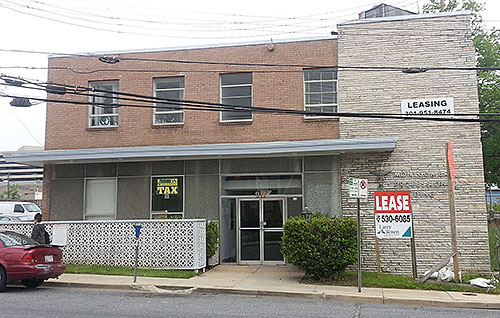
The current photos in this post were taken May 21, 2014. Exactly 54 years earlier, the Washington Post published Thomen and Cromar’s proposed scheme for 911 Silver Spring Ave.
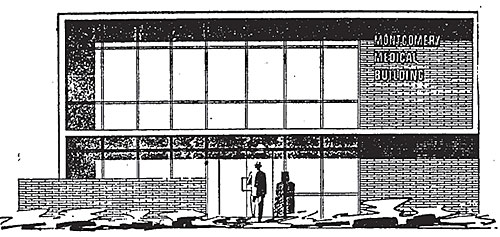
Washington Post, May 21, 1960
The rendering has a strong geometric outline that was popular in the county for architectural designs in the late 1950s. As built, the final design has a strong vertical pylon that had become popular by 1960. Visual interest comes from a variety of wall surfaces of stone, concrete, and brick. The pylon, bearing lettering with the building name, is sheathed with thin bands of ashlar stone.
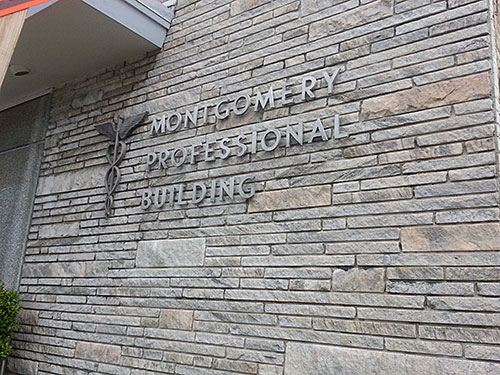
To the left of the entrance, walls are sheathed with textured panels. The material appears to be Tecfab panels. Charles Goodman designed Tecfab panels which were manufactured in Greenbelt and are found on churches, schools and commercial buildings through the region. For more on Tecfab panels, see my research report on the Georgia Avenue Baptist Church of Glenmont.
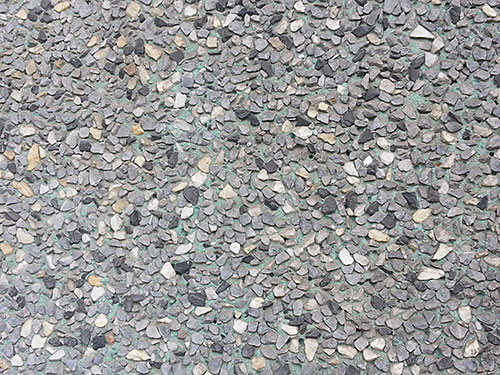
Extending out from the entrance, in front of the Tecfab panel facade, are low walls of concrete screen blocks that have a lively geometric pattern.
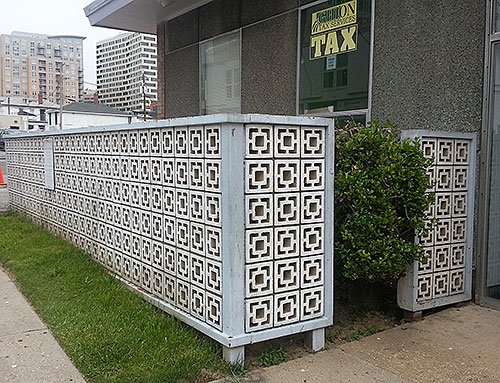
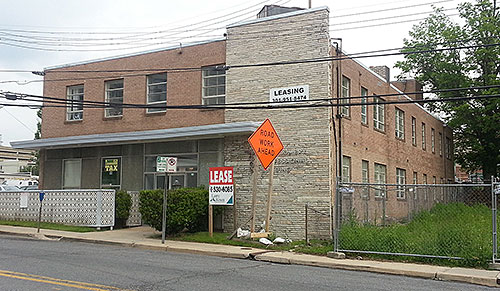
Thomen and Cromar were local architects. So local in fact their office was directly behind the Montgomery Professional Building. Thomen and Cromar had designed their own office building at 912 Thayer Avenue the previous year (1959). Other projects the firm designed include Regent House (1958) Cleveland Park; Channel House (1960) Foggy Bottom, now the George Washington University Inn; and Kenwood House (1960) Chevy Chase.
Addendum
Jerry McCoy of the Silver Spring Historical Society sends us this photo with the architect’s signature brick on the front façade of this building. Thanks Jerry!
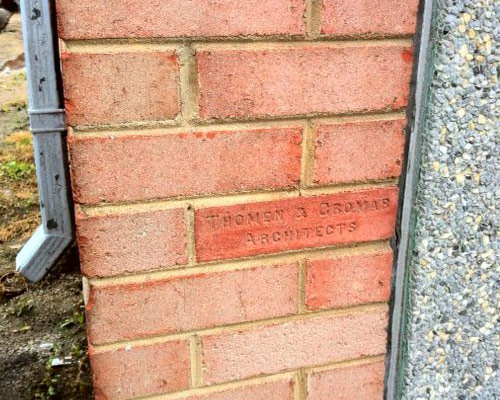
 Montgomery Modern explores mid-century modern buildings and communities that reflect the optimistic spirit of the post-war era in Montgomery County, Maryland. From International Style office towers to Googie style stores and contemporary tract houses, Montgomery Modern celebrates the buildings, technology, and materials of the Atomic Age, from the late 1940s through the 1960s. A half century later, we now have perspective to appreciate these resources as a product of their time.
Montgomery Modern explores mid-century modern buildings and communities that reflect the optimistic spirit of the post-war era in Montgomery County, Maryland. From International Style office towers to Googie style stores and contemporary tract houses, Montgomery Modern celebrates the buildings, technology, and materials of the Atomic Age, from the late 1940s through the 1960s. A half century later, we now have perspective to appreciate these resources as a product of their time.